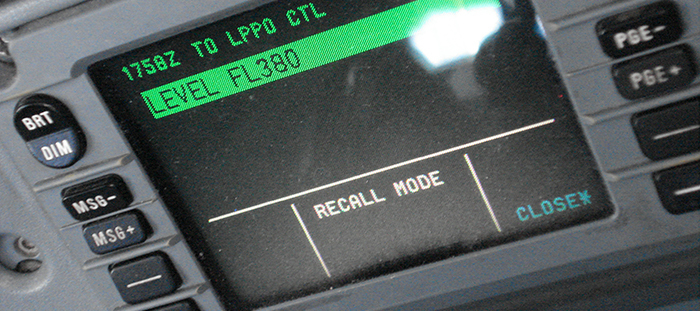Challenges & Solutions
Custom Radios and Data-Link Capabilities
Simulate aircraft radios that communicate with ATC over voice and data link.
ASTi is developing a custom ARINC-429 interface that directly communicates with OFT equipment. The aircraft mission computer and flight management system marshal data messages intended for the very-high frequency (VHF) and satellite radios. ASTi intercepts these messages and simulates the radio transmissions before ATC receives them.
Thanks to ASTi's Telestra data-link interface and custom 429 interfaces, students can send messages to ATC via flight management systems identical to those on real flights. They will also train with the same audio equipment and headsets that pilots use on actual aircraft. Additionally, ASTi’s ACU2 audio distribution devices connect remote operator headsets, speakers, and control panels to a central server, enhancing the exercise with superior audio and realism.
Realistic ATC Environment
Generate AI entities that simulate ATC and other aircraft, creating a dynamic environment that sounds and behaves like actual controllers.
ASTi's SERA creates a dynamic environment, complete with AI controlled entities and controllers. Not only does it increase flight training's realism, but it also provides an immersive ATC and traffic experience in the air and on the ground. SERA eliminates the need for instructor role-play and provides real-world communication demands, increasing training value and decreasing costs.
Simulated traffic realistically aviates, navigates, and communicates in shared airport and airspace environments. Pilots in a SERA environment can correlate audible radio traffic with visual ground, landing, and departing traffic. This activity provides important cues missing from many simulations. As in the real world, radio messages are appropriate to the currently tuned frequency and geographical location.
Integrated Solution
Assimilate SERA into the customer’s existing simulator without significant development or configuration.
SERA works with a variety of simulators and can drive image generators in multiple formats, including Distributed Interactive Simulation (DIS) and Common Image Generator Interface (CIGI). The host system and instructor operator station can communicate with SERA’s public API. As a result, systems like the traffic collision avoidance systems (TCAS) and Automatic Dependent Surveillance–Broadcast (ADS-B) can understand SERA entities. Administrators and instructors can easily configure and manage these settings in the SERA web interface.
For this program, ASTi developed a custom, stimulated (i.e., hardware) solution that easily integrated into the Air Force’s existing equipment. In this configuration, a SERA server connected to an ASTi 429 Audio Bridge. This customizable device incorporated CPDLC directly into the simulator, sending ARINC-741 SATCOM and ARINC-750 VHF protocols over an ARINC-429 bus. The result was quick and seamless integration—no reverse engineering or modifications required.
Components Deployed
Telestra Server
Real-Time Environment
Features
- High-fidelity communications
- Standards-compliant and interoperable to ensure success in collective, network-based simulation and training
- Flexible to accommodate front-end, back-end, and combined training modes for a variety of applications
Telestra Studio
Development Environment
Features
- Centralized development of multiple models that administrators can push to individual trainers’ Telestra servers for execution
- Extensive library of modeled objects to speed model development and reuse
- Available as a standalone computing platform or as a virtual machine
SERA
Simulated Environment for Realistic ATC
Features
- Speech recognition engine: delivers over 97 percent word accuracy for native English and English as a Second Language (ESL) speakers.
- Scenario generation: build and customize a training exercise that includes a standard flight plan and additional configuration settings.
- Environment generation: automatically generate the appropriate traffic and ATC interactions for any flight plan.
- Flight history transcripts: view past flights, capture performance metrics for every student, review past student responses, and check student scores.
- Traffic plan generation: customize traffic density, call signs, departure and destination airports, and the type of aircraft that appears at an airport.
